Abstract
During Experiments 1 and 2, subjects were trained in a series of related conditional discriminations in a matching-to-sample format (A1-B1, A1-C1 and A2-B2, A2-C2). A low-rate performance was then explicitly trained in the presence of B1, and a high-rate performance was explicitly trained in the presence of B2. The two types of schedule performance transferred to the C stimuli for all subjects in both experiments, in the absence of explicit reinforcement through equivalence (i.e., C1 = low rate and C2 = high rate). In Experiment 2, it was also shown that these discriminative functions transferred from the C1-C2 stimuli to two novel stimuli that were physically similar to the C stimuli (SC1 and SC2, respectively). For both these experiments, subjects demonstrated the predicted equivalence responding during matching-to-sample equivalence tests. In Experiments 3 and 4, the conditional discrimination training from the first two experiments was modified in that two further conditional discrimination tasks were trained (C1-D1 and C2-D2). However, for these tasks the D stimuli served only as positive comparisons, and ND1 and ND2 stimuli served as negative comparisons (i.e., C1 × ND1 and C2 × ND2). Subsequent to training, the negatively related stimuli (ND1 and ND2) did not become discriminative for the schedule performances explicitly trained in the presence of B1 and B2, respectively. Instead, the ND1 stimulus became discriminative for the schedule performance trained in the presence of B2, and ND2 became discriminative for the schedule performance trained in the presence of B1. All subjects from Experiment 4 showed that the novel stimulus SND1, which was physically similar to ND1, became discriminative for the same response pattern as that controlled by ND1. Similarly, SND2, which was physically similar to ND2, became discriminative for the same response pattern as that controlled by ND2. Subjects from both Experiments 3 and 4 also produced equivalence responding on matching-to-sample equivalence tests that corresponded perfectly to the derived performances shown on the transfer of discriminative control tests.
Keywords: stimulus equivalence, transfer of functions, S+ relations, S− relations, arbitrary relations, physical similarity, complex time-based reinforcement schedules, typing, key press, humans
Full text
PDF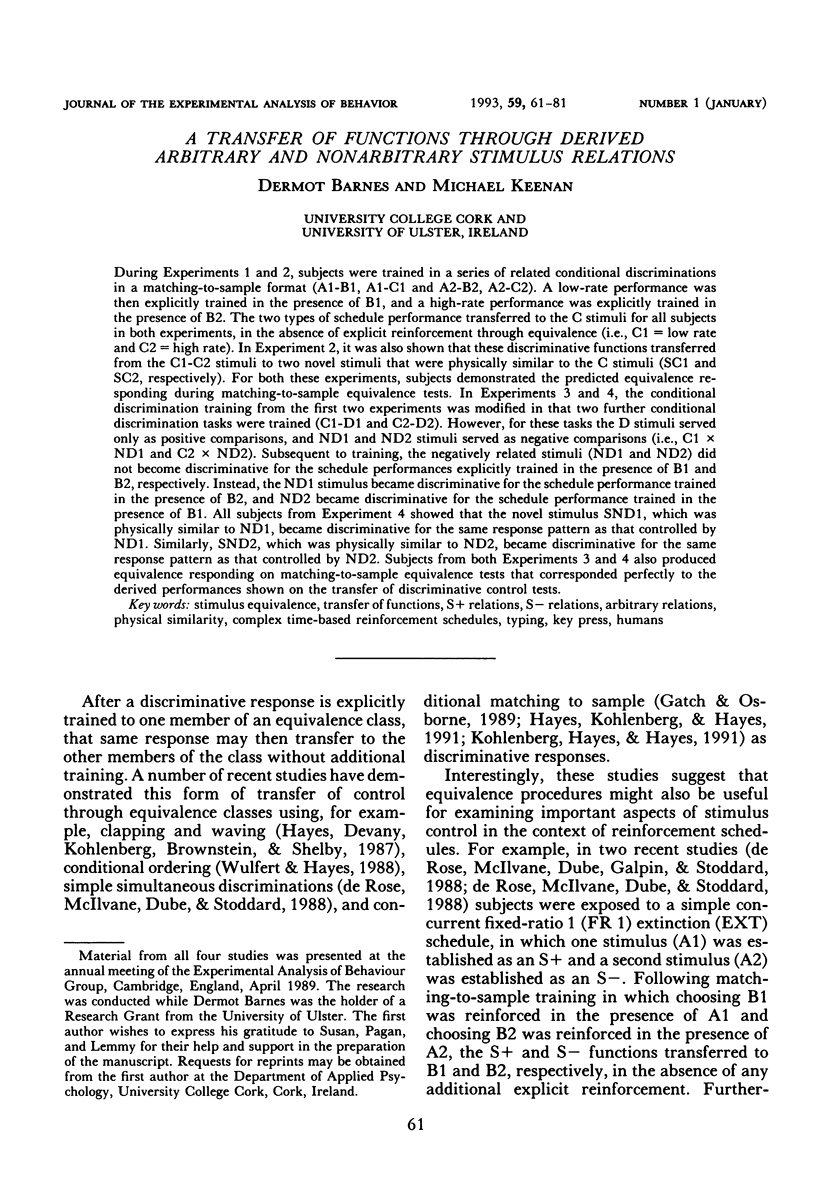

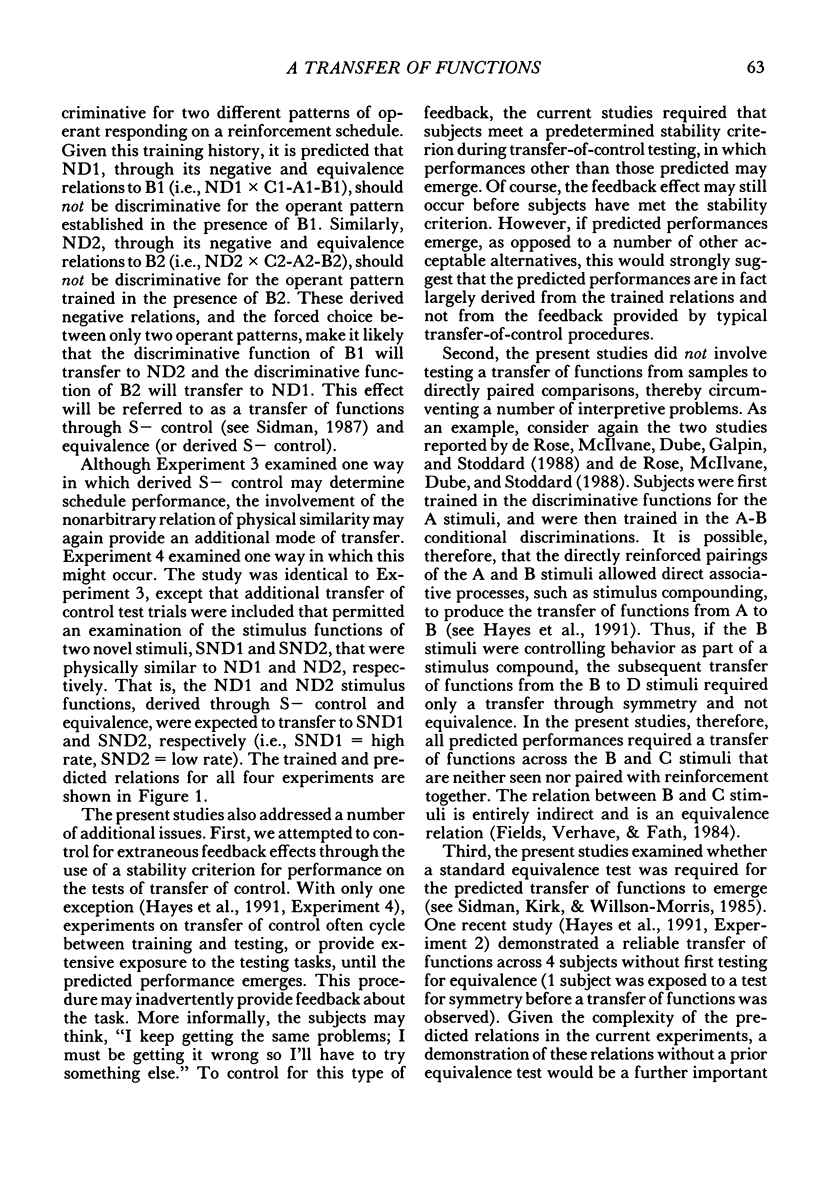
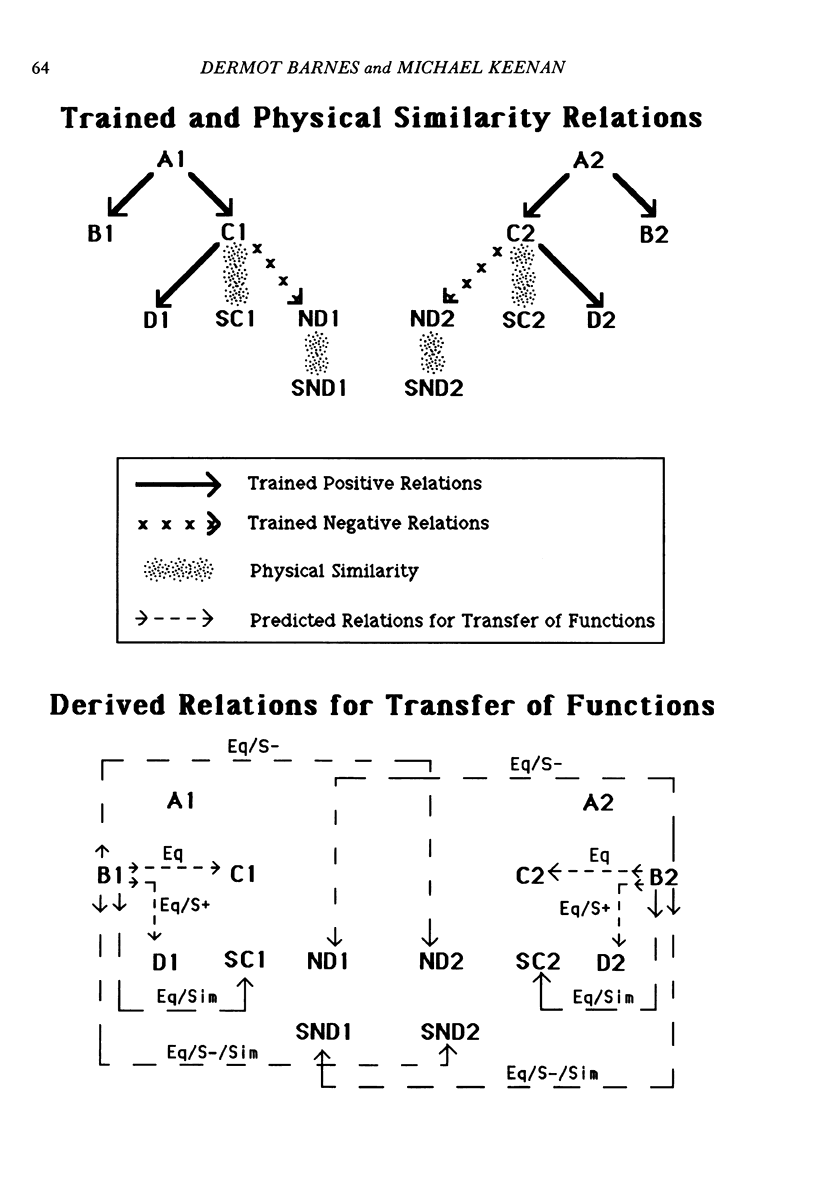



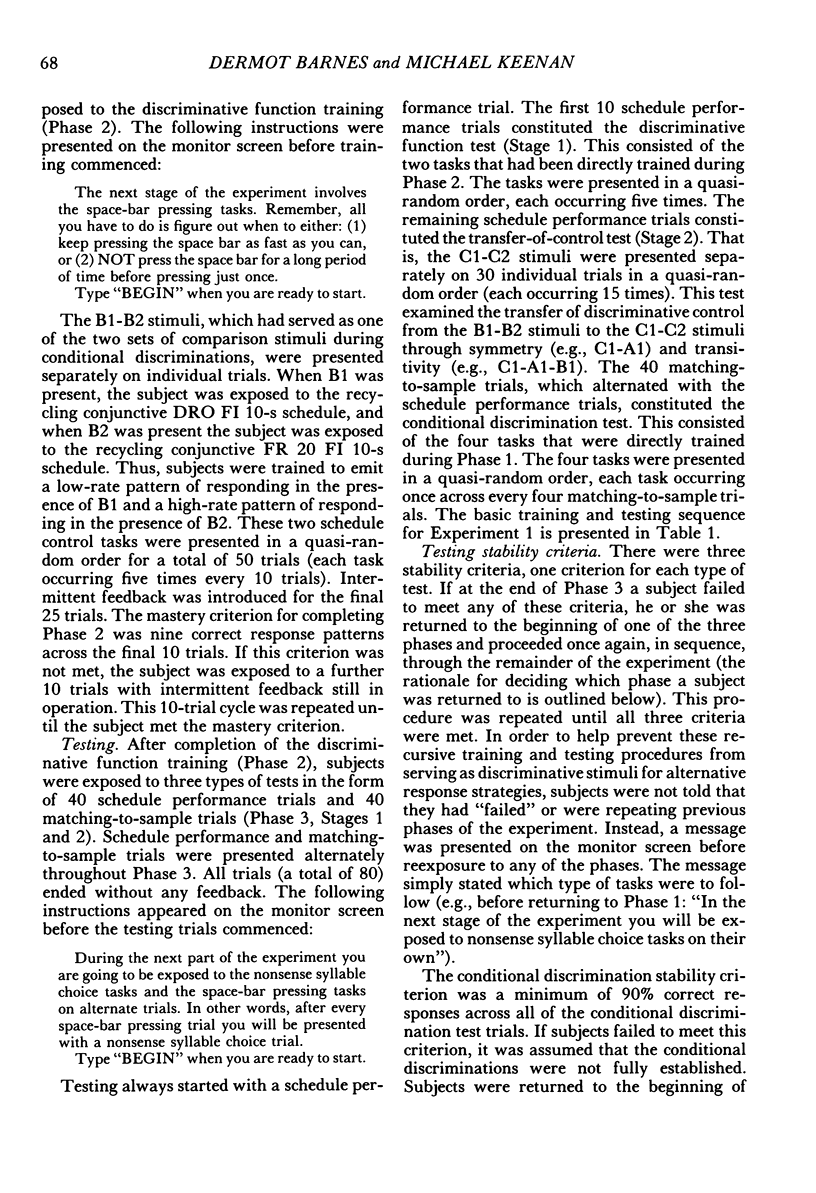

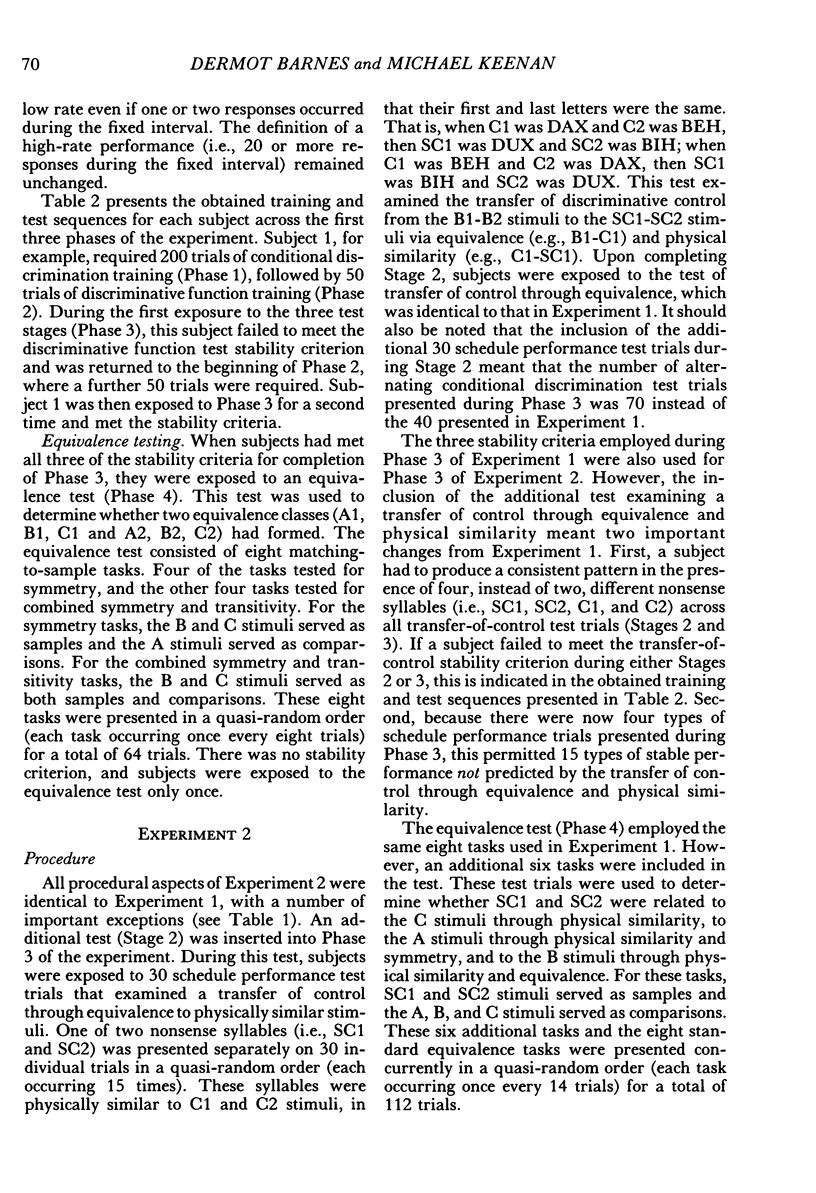
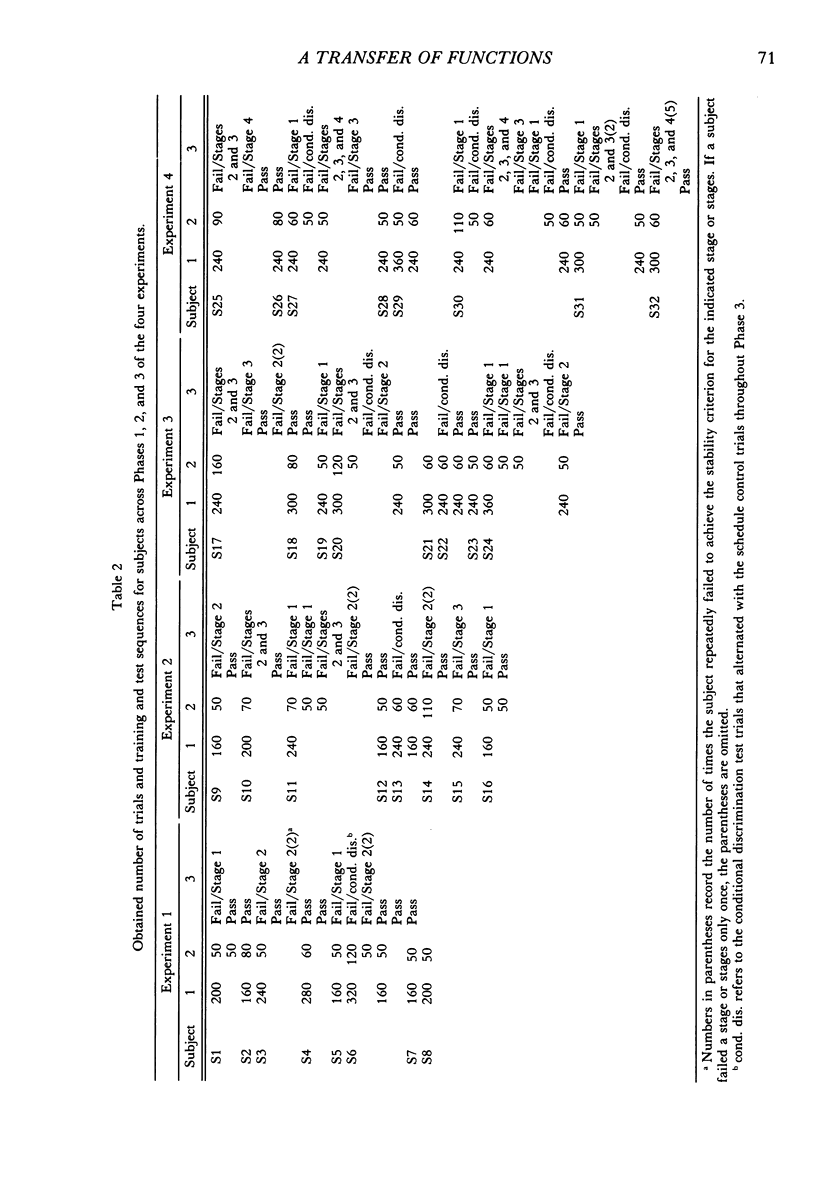
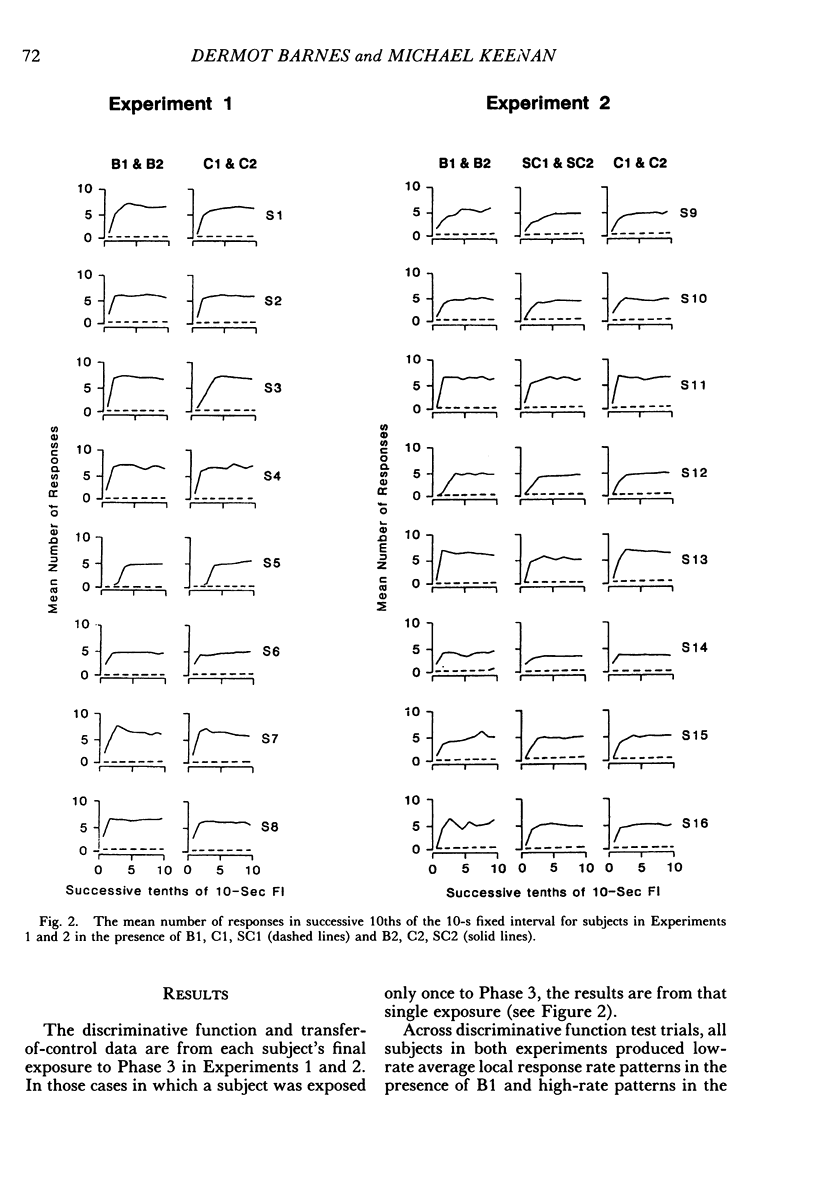
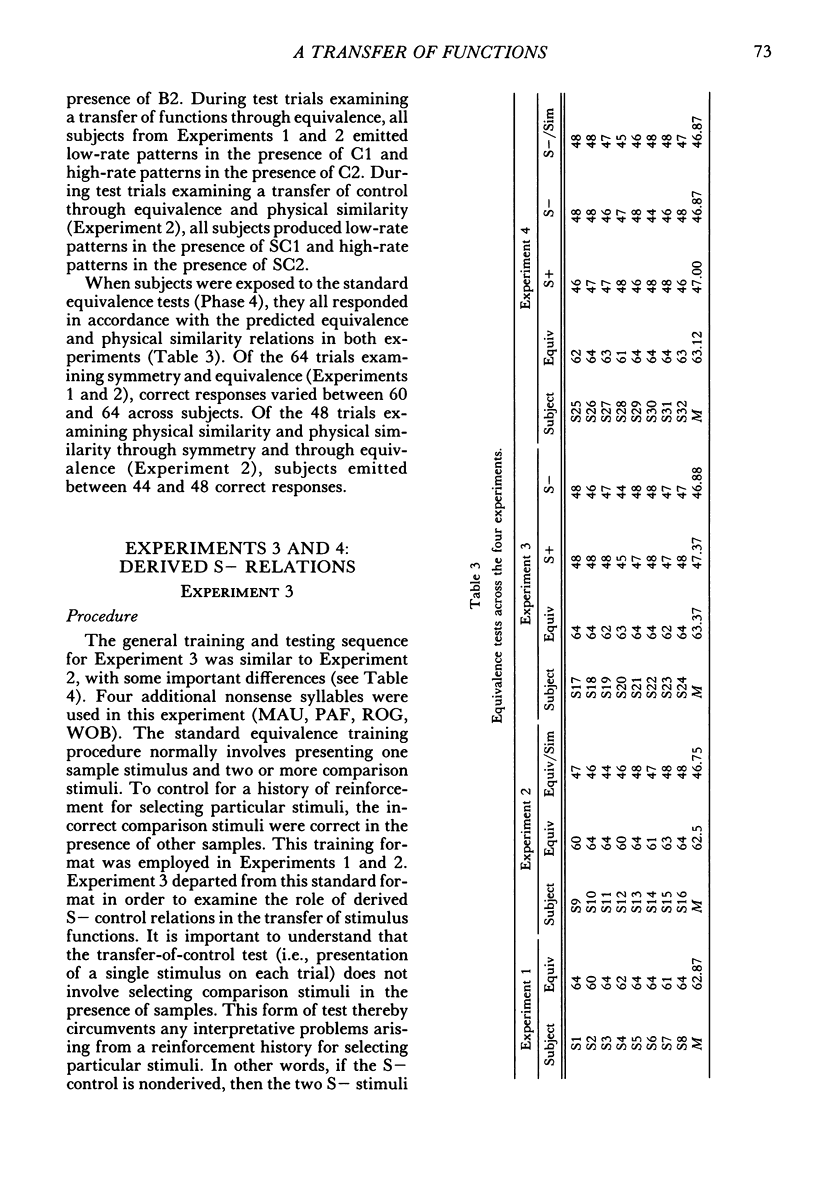

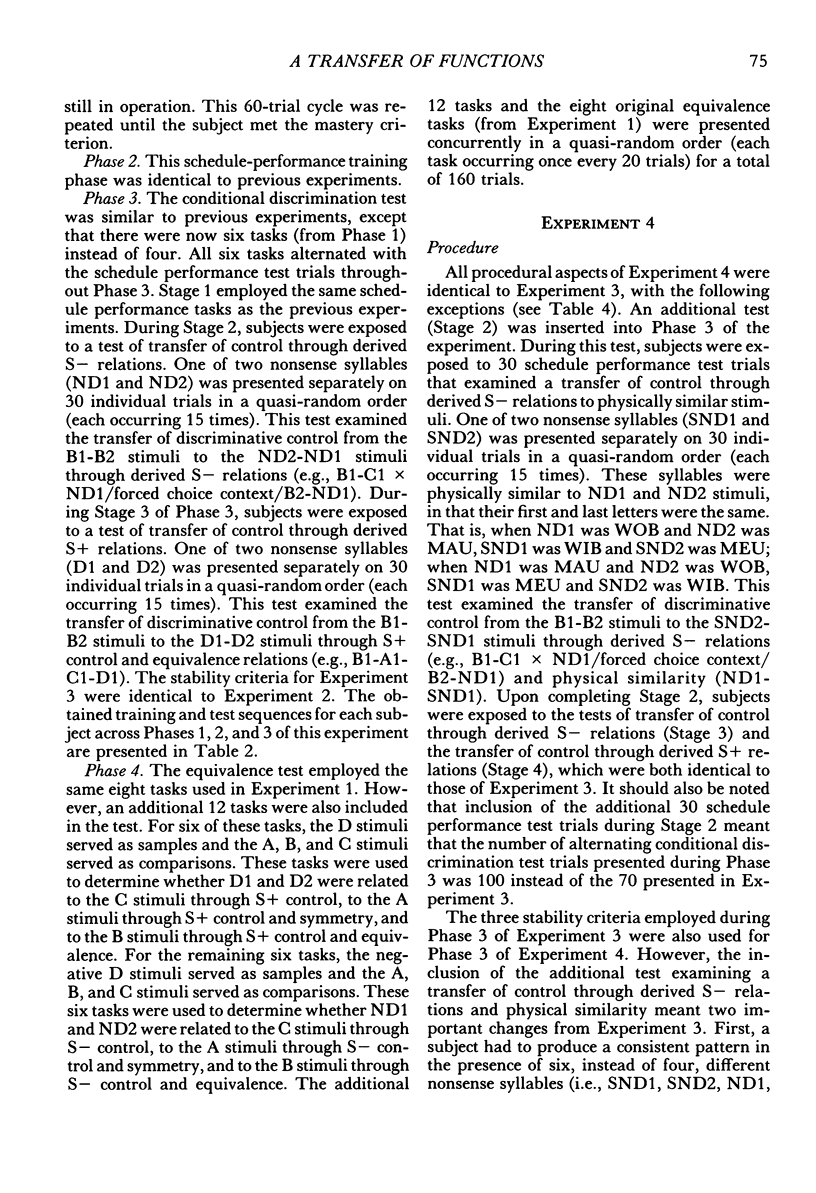


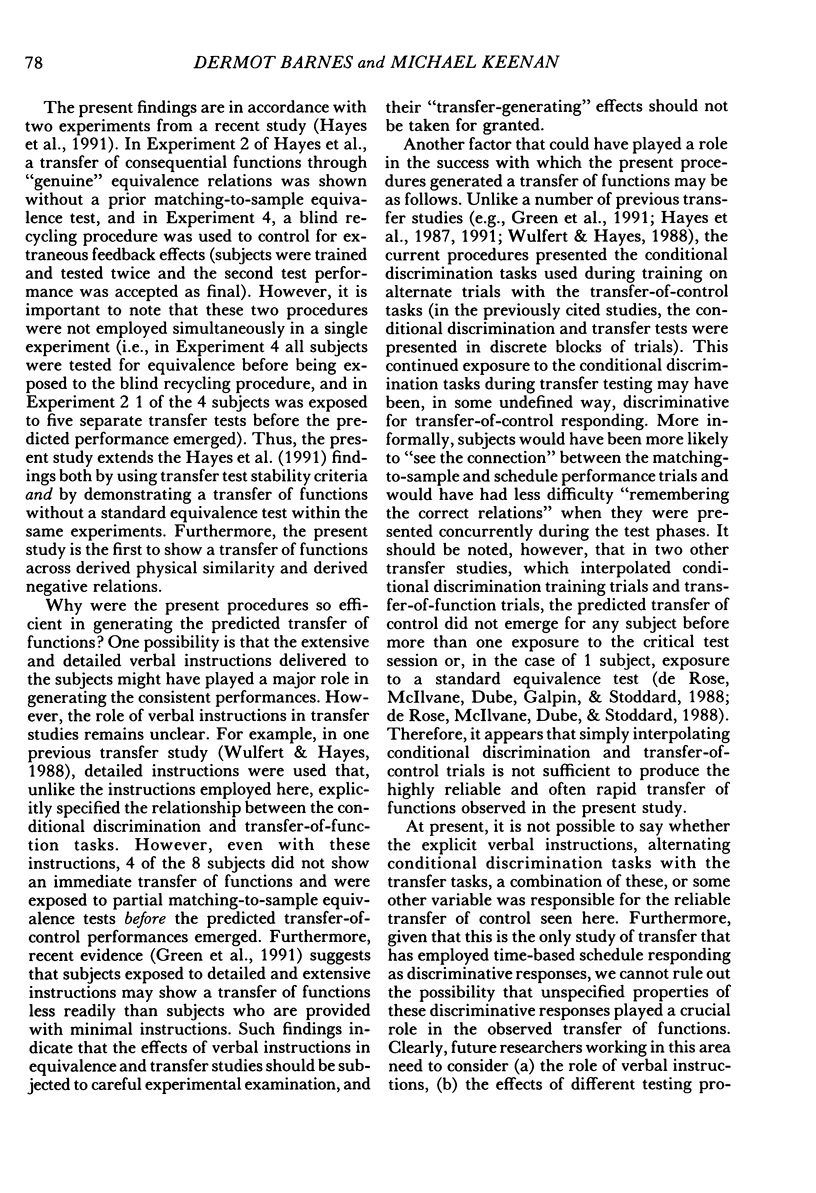
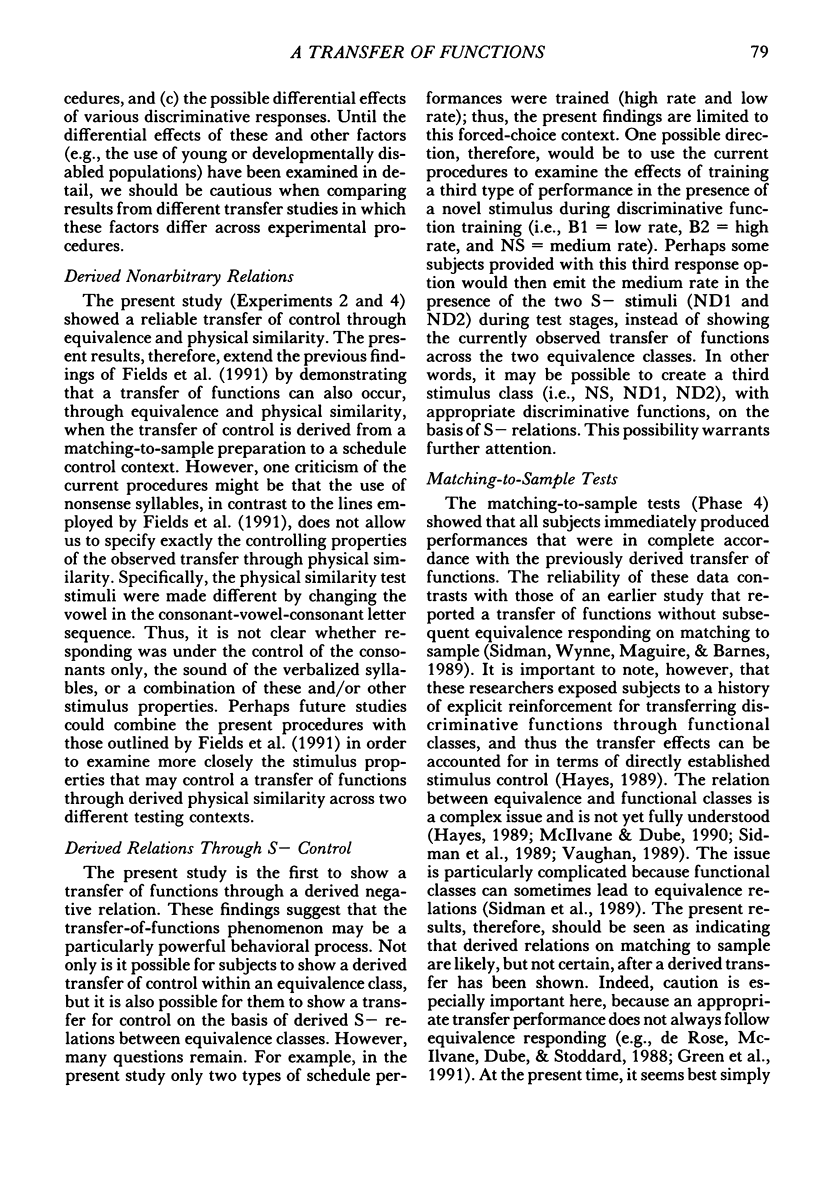
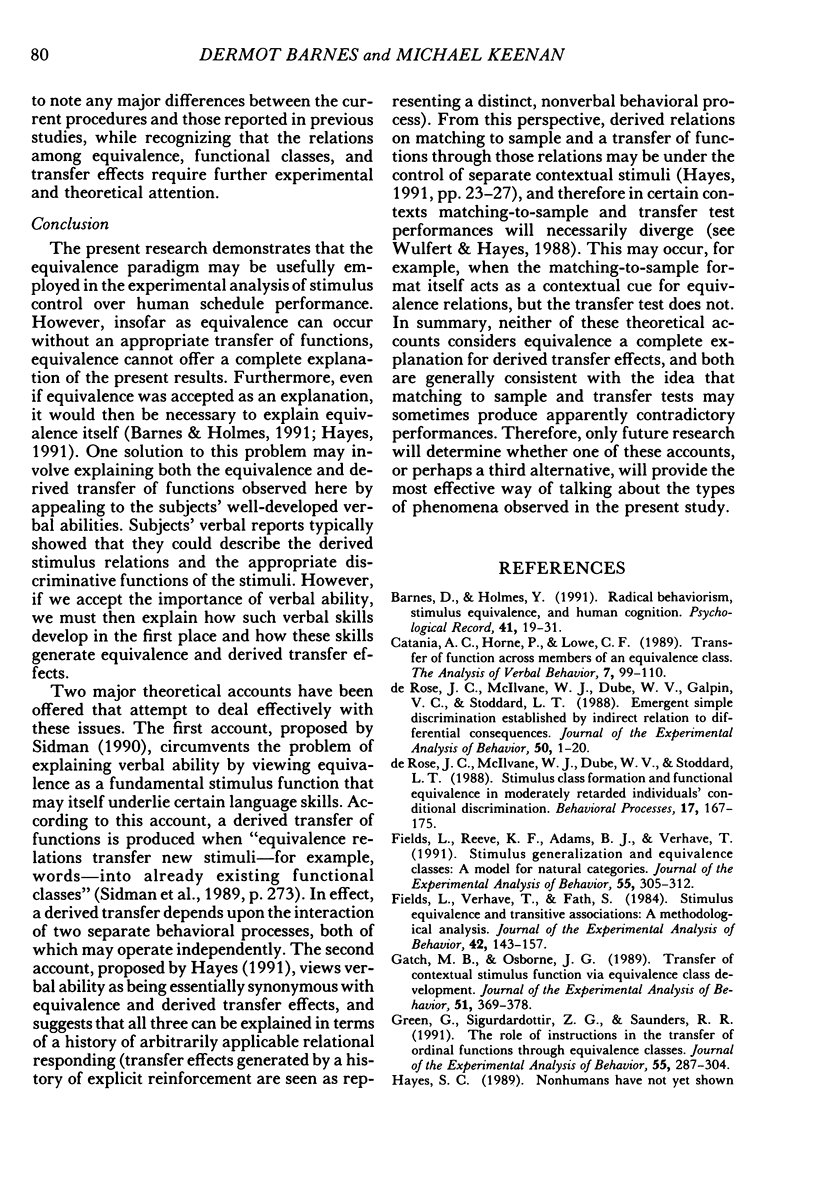
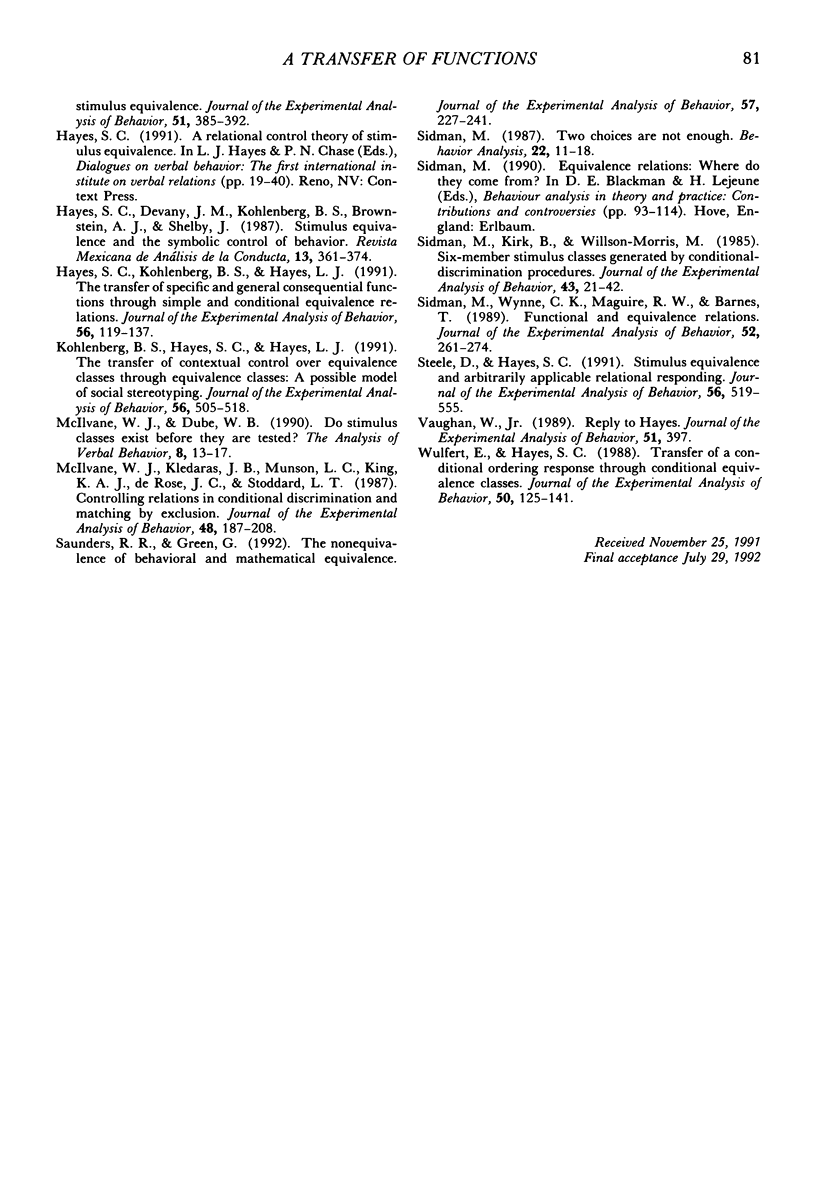
Selected References
These references are in PubMed. This may not be the complete list of references from this article.
- Fields L., Reeve K. F., Adams B. J., Verhave T. Stimulus generalization and equivalence classes: a model for natural categories. J Exp Anal Behav. 1991 May;55(3):305–312. doi: 10.1901/jeab.1991.55-305. [DOI] [PMC free article] [PubMed] [Google Scholar]
- Fields L., Verhave T., Fath S. Stimulus equivalence and transitive associations: A methodological analysis. J Exp Anal Behav. 1984 Jul;42(1):143–157. doi: 10.1901/jeab.1984.42-143. [DOI] [PMC free article] [PubMed] [Google Scholar]
- Gatch M. B., Osborne J. G. Transfer of contextual stimulus function via equivalence class development. J Exp Anal Behav. 1989 May;51(3):369–378. doi: 10.1901/jeab.1989.51-369. [DOI] [PMC free article] [PubMed] [Google Scholar]
- Green G., Sigurdardottir Z. G., Saunders R. R. The role of instructions in the transfer of ordinal functions through equivalence classes. J Exp Anal Behav. 1991 May;55(3):287–304. doi: 10.1901/jeab.1991.55-287. [DOI] [PMC free article] [PubMed] [Google Scholar]
- Hayes S. C., Kohlenberg B. S., Hayes L. J. The transfer of specific and general consequential functions through simple and conditional equivalence relations. J Exp Anal Behav. 1991 Jul;56(1):119–137. doi: 10.1901/jeab.1991.56-119. [DOI] [PMC free article] [PubMed] [Google Scholar]
- Hayes S. C. Nonhumans have not yet shown stimulus equivalence. J Exp Anal Behav. 1989 May;51(3):385–392. doi: 10.1901/jeab.1989.51-385. [DOI] [PMC free article] [PubMed] [Google Scholar]
- Kohlenberg B. S., Hayes S. C., Hayes L. J. The transfer of contextual control over equivalence classes through equivalence classes: a possible model of social stereotyping. J Exp Anal Behav. 1991 Nov;56(3):505–518. doi: 10.1901/jeab.1991.56-505. [DOI] [PMC free article] [PubMed] [Google Scholar]
- McIlvane W. J., Kledaras J. B., Munson L. C., King K. A., de Rose J. C., Stoddard L. T. Controlling relations in conditional discrimination and matching by exclusion. J Exp Anal Behav. 1987 Sep;48(2):187–208. doi: 10.1901/jeab.1987.48-187. [DOI] [PMC free article] [PubMed] [Google Scholar]
- Saunders R. R., Green G. The nonequivalence of behavioral and mathematical equivalence. J Exp Anal Behav. 1992 Mar;57(2):227–241. doi: 10.1901/jeab.1992.57-227. [DOI] [PMC free article] [PubMed] [Google Scholar]
- Sidman M., Kirk B., Willson-Morris M. Six-member stimulus classes generated by conditional-discrimination procedures. J Exp Anal Behav. 1985 Jan;43(1):21–42. doi: 10.1901/jeab.1985.43-21. [DOI] [PMC free article] [PubMed] [Google Scholar]
- Sidman M., Wynne C. K., Maguire R. W., Barnes T. Functional classes and equivalence relations. J Exp Anal Behav. 1989 Nov;52(3):261–274. doi: 10.1901/jeab.1989.52-261. [DOI] [PMC free article] [PubMed] [Google Scholar]
- Steele D., Hayes S. C. Stimulus equivalence and arbitrarily applicable relational responding. J Exp Anal Behav. 1991 Nov;56(3):519–555. doi: 10.1901/jeab.1991.56-519. [DOI] [PMC free article] [PubMed] [Google Scholar]
- Vaughan W. Reply to hayes. J Exp Anal Behav. 1989 May;51(3):397–397. doi: 10.1901/jeab.1989.51-397. [DOI] [PMC free article] [PubMed] [Google Scholar]
- Wulfert E., Hayes S. C. Transfer of a conditional ordering response through conditional equivalence classes. J Exp Anal Behav. 1988 Sep;50(2):125–144. doi: 10.1901/jeab.1988.50-125. [DOI] [PMC free article] [PubMed] [Google Scholar]
- de Rose J. C., McIlvane W. J., Dube W. V., Galpin V. C., Stoddard L. T. Emergent simple discrimination established by indirect relation to differential consequences. J Exp Anal Behav. 1988 Jul;50(1):1–20. doi: 10.1901/jeab.1988.50-1. [DOI] [PMC free article] [PubMed] [Google Scholar]


